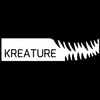I've recently released an image based lighting baker for physically based rendering to generate preconvonvolved specular cube maps (computed against a user specified brdf) using the seperable method proposed by Epic during Siggraph 2013.
The tool also bakes out the BRDF LUT, and a diffuse irradiance environment map. Cubemaps are saved as both MDR and HDR.
You can find the tool at:
https://github.com/derkreature/IBLBaker
There are also a number of walkthrough and example videos at:
http://www.derkreature.com/
I have also supplied 2 Maya example scenes to test the cubemap outputs using Viewport 2.0 and cgfx.
[media]https://vimeo.com/110805546[/media]
Please contact me through my github account if you find any bugs, have questions or have any suggestions. The code is based on some of my older framework code. You'll have to hold your nose around some of the more horrible bits.
Hopefully some of you find this useful.
If there is any interest, I'd consider writing an article on this.
I thought I'd throw in another quick demo of this tech applied to character rendering. (Still proof of concept really):
[media]https://vimeo.com/100285383[/media]







